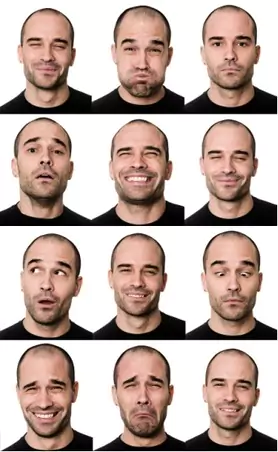 If you live in a big city in a developed country, then you are more or less involved in different kinds of communication. Communication nowadays has become a sort of cult; daily, people maintain dozens of personal contacts—at work, in the street, public transport, and so on. Because of this, it is not only important what and how you say something to other people, but also how your body behaves in the process of communication, as body language is as informative as the spoken one, sometimes conveying information more personal and important than the one said aloud. This is called nonverbal communication.
If you live in a big city in a developed country, then you are more or less involved in different kinds of communication. Communication nowadays has become a sort of cult; daily, people maintain dozens of personal contacts—at work, in the street, public transport, and so on. Because of this, it is not only important what and how you say something to other people, but also how your body behaves in the process of communication, as body language is as informative as the spoken one, sometimes conveying information more personal and important than the one said aloud. This is called nonverbal communication.

✅ AI Essay Writer ✅ AI Detector ✅ Plagchecker ✅ Paraphraser
✅ Summarizer ✅ Citation Generator
Nonverbal communication includes facial expressions, gestures, the distance between speakers, eye contact, voice intonations, touch, and many other minor details which—if decrypted properly—can provide speakers with valuable details about each other. For example, space between people can say a lot about the level of intimacy between them: usually, the shorter the distance between speakers, the more friendly or intimate they are, and vice versa. Or if a person avoids eye contact, it might mean that he or she is hiding something, feels uncomfortable around you, and so on (IFR).
Body language has several important functions. For instance, a person’s gestures can repeat the message he or she is making orally; a little child explaining how birds fly and waving his or her arms like wings is a decent example of this function. Another function—the opposite—is the opposite: when the way a conversationalist acts does not match with the orally-transmitted message. An example is when a person sitting with a dull face and twirling a pen in their fingers says they are interested in what you say. Substitution occurs when verbal messages can be expressed by nonverbal means (like shrugging). The function of complementing can be explained by a situation when a parent pats their child on the head for behaving well, while speaking it out loud. In addition, gestures can be used for accenting, like when raising one’s index finger when speaking about something important (HelpGuide.org).
At the same time, it is important to remember that in different cultures, norms of communication may vary; for example, in some eastern countries, looking straight in the eyes of a conversationalist is considered rude. In Caucasus, men usually communicate when gathering in large groups where everyone stands very close to each other. Men in some Arabic countries may walk around the street holding hands, or may kiss each other in cheek when greeting, but this is the indication of friendship between straight men, not romance or intimacy. Therefore, sometimes body language may also differ depending on culture (IRF).
Gestures are a rich layer of everyday communication, and being able to decrypt them may disclose new meanings of what people say to each other. Nonverbal communication usually includes posture, voice intonations, touch, eye contact, distance between speakers, and facial expressions. Body language messages may accent, compliment, repeat, substitute, or contradict orally spoken messages. However, depending on the culture, these messages may differ, so it is important to remember about it when communicating with people from different countries.
References
“Nonverbal Communication.” : Improving Your Nonverbal Skills and Reading Body Language. N.p., n.d. Web. 07 Apr. 2015. <http://www.helpguide.org/articles/relationships/nonverbal-communication.htm>
“What is Nonverbal Communication?” FRIHealth. N.p., 13 July 2013. Web. 07 Apr. 2015.
“Why Communicating with Foreigners Might Be Tricky?” IFRTravel. N.p., 15 Aug. 2014. Web. 07 Apr. 2015.
Follow us on Reddit for more insights and updates.




Comments (0)
Welcome to A*Help comments!
We’re all about debate and discussion at A*Help.
We value the diverse opinions of users, so you may find points of view that you don’t agree with. And that’s cool. However, there are certain things we’re not OK with: attempts to manipulate our data in any way, for example, or the posting of discriminative, offensive, hateful, or disparaging material.